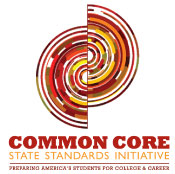In 1996, Achieve, Inc. was founded by the National Governors Association and the Council of Chief State school Officers. The purpose in doing so was to improve the scope and effectiveness of schools across the country.
In 2009, the Common Core State Standards Initiative was introduced in order to unify states as they educate children to be better prepared for college and entering the work force. The Standards are divided into two main sections: English and Language Arts; and Mathematics. The ELA standards include benchmarks for literacy in content areas such as social studies and science. The CCSS have been fully adopted by 45 states, three territories, and the District of Columbia. Minnesota has adopted the ELA standards only.
At NEED we understand the importance of knowing how lessons and activities align with state standards, and we make every effort to keep our correlations to these standards current. In response to the wide acceptance of CCSS, we have also correlated everything we publish to them.
One of the greatest things about NEED curriculum guides is their cross-curricular focus. Students learn about the benefits and limitations of specific energy sources while also learning the social aspects of energy use. A simple primary-level story about the effects of constructing a dam for hydropower not only assists young readers in improving their reading proficiency and fluency, but also provides the opportunity to learn more about one of our most widely used renewable sources of energy.
The structure of the CCSS is different from that of most state standards in that skills are emphasized more than actual content. However, the spiraling approach, with suggestions of the types of texts to introduce, provides a framework for teachers to select specific pieces to use in their classrooms. The absence of a specific reading list for ELA, for example, allows teachers a certain degree of flexibility and autonomy in deciding which books to use. As a result, teachers can include more energy-related activities and reading within their classrooms.
All of the Energy Infobooks and any curriculum guides with student backgrounder information meet the standards for Science Literacy and Reading Informational Text. Educators looking for an elementary-level text that can help meet the standards relating to Reading Literature will find that Energy on Stage is a fun alternative to a typical story book. Finding practical applications in mathematics can be a challenge, and many NEED activities, such as Plug Loads and Comparing Light Bulbs, can be used to reinforce problem-solving and mathematical operations skills.
As with state standards, the document with CCSS correlations is an Excel spreadsheet, with the standards listed across the top and our curriculum guides listed down the left side. Each grade level specified by the Standards has its own spreadsheet, and the Literacy standards are also grouped by grade level with all content areas for that grade listed on one sheet. On each spreadsheet, only NEED titles that are written specifically for that grade level are included. Where the curriculum guides, or activities within them, and the standards meet in the middle, a solid dot indicates that the guide or activity fully meets the standard. A hollow dot indicates support for a standard. If the space it is empty, it is because we did not feel that the activity provided enough support for the standard for us to claim it can be used. Teachers should always use their own judgment in deciding how NEED activities and texts align to the standards they are teaching at any given time.
Correlations to CCSS can be found on the same page as our state standards correlations. Navigate to Curriculum Correlations and you’ll see links to the ELA and Mathematics files. You’ll need Microsoft Excel (or a compatible program) to access the documents.





